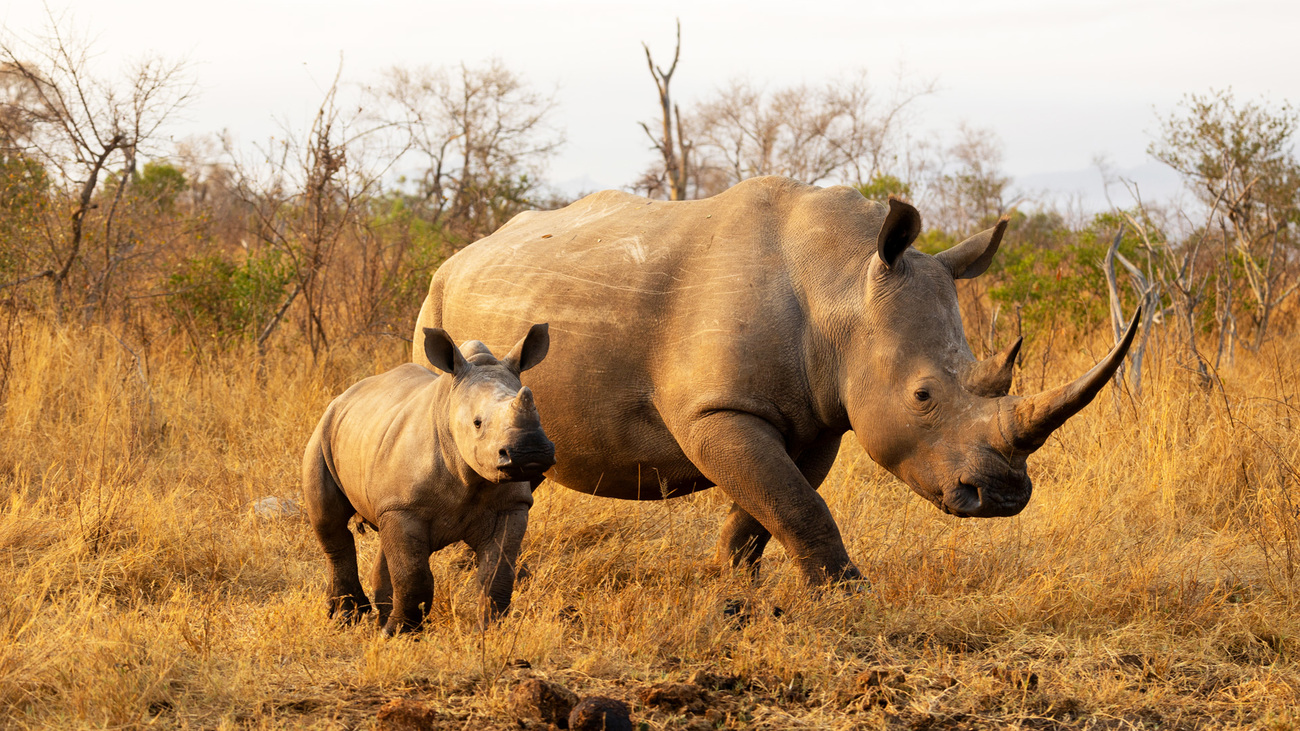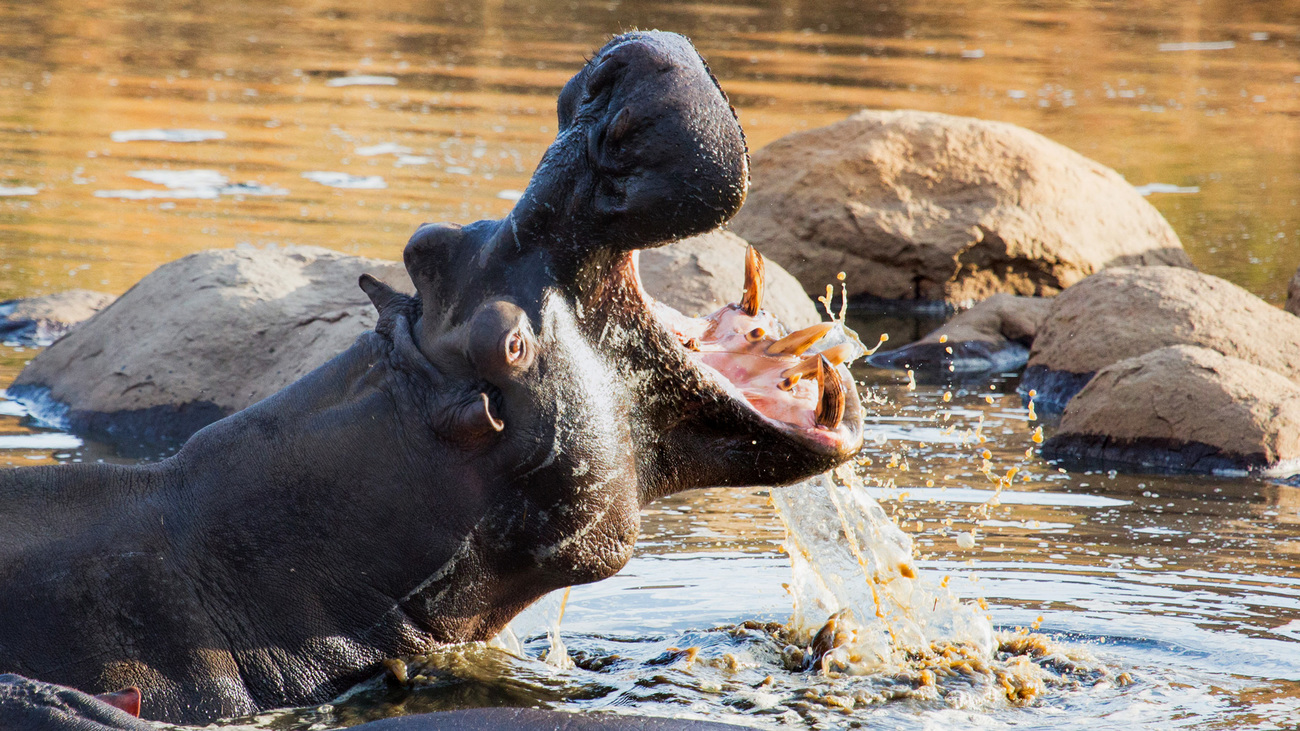Human-wildlife conflict in South Africa
Human-wildlife conflict in South Africa
Human-wildlife conflict is a complex issue that lies at the intersection of conservation, community livelihoods, and ecosystem health. It relates to how we live and interact with animals and occurs when the needs and activities of human populations clash with those of wildlife, with negative consequences for both sides.

Human-wildlife conflict in South Africa is a growing and complex issue. Navigating these conflicts requires a nuanced understanding of their underlying causes, as well as solutions that address the needs of both humans and wildlife.
In this article, we delve into the basics and complexities of human-wildlife conflict, explore its causes and effects in South Africa, discuss which animals are most affected in the region, and look at how IFAW is working to resolve and reduce these conflicts.
What is human-wildlife conflict?
Human-wildlife conflict arises when interactions between humans and wildlife result in negative outcomes for either party.
It usually occurs when a wild animal threatens human safety or their livelihood or when humans and animals compete for resources. People often engage in retaliatory actions against wildlife they believe threaten their safety and/or their livelihoods by damaging crops and property or killing livestock. They may hunt or trap more of the species that carried out the offence in an attempt to remove the threat. Of course, attempting to injure or kill wildlife comes with its own safety risks for humans. Human-wildlife conflict therefore puts both humans and animals at risk of injury or fatality.
What causes human-wildlife conflict?
The root causes of human-wildlife conflict are often urbanization, agricultural expansion, and climate change.
Urbanisation
The global human population has more than tripled over the last seven decades—and the more people there are, the more land we need to live on. As a result, we’ve expanded into rural areas where wildlife resides, taking over their natural habitats. With humans and wildlife now living in closer proximity, the likelihood of human-wildlife conflict has increased, too.
Agricultural expansion
A larger human population means a greater need for food production. As such, we’ve converted natural areas into agricultural land, fragmenting wildlife populations and habitats in the process. Wildlife is now more likely to enter these areas in search of food and shelter, often damaging or raiding crops. To protect their property and livelihoods, farmers have resorted to hunting, snaring, and killing these animals in retaliation or as a preventative measure.
Climate change
As the climate changes, ecosystems change with it: temperatures rise, precipitation levels become more unpredictable, and populations and distributions of prey species are impacted, which affects carnivores like big cats, hyenas, wild dogs, and birds of prey. Some animals have been forced to migrate to find food and more habitable environments.
As they migrate, they’re more likely to come across human settlements and compete for resources like water, food, or space. As these resources become more limited due to climate change, the competition—and incidents of conflict—grows.

What does human-wildlife conflict look like in South Africa?
South Africa, known for its diverse landscapes and wildlife, experiences significant human-wildlife conflict. It’s particularly prevalent in areas adjacent to protected national parks and agricultural lands, where communities and farmers are vulnerable to crop raiding, livestock predation, and threats to human safety.
To help mitigate the effects of human-wildlife conflict, schemes like the Kruger National Park (KNP) livestock compensation programme have been put in place. This initiative aims to offset the damages livestock farmers experience when predators escape the protected park and harm or kill their livestock. This includes putting up and patrolling high fencing to prevent wild animals from getting out and accessing the agricultural land, as well as offering monetary compensation to those affected to prevent retaliation and escalation.
Examples of human-wildlife conflict in South Africa
Here are some examples of human-wildlife conflict in South Africa.
Human expansion
As human settlements expand and encroach on wildlife habitats in South Africa, it intensifies human-wildlife conflict. This includes the area in and around Kruger National Park, where large mammals, such as buffalo, lions, elephants, hippos, and crocodiles, are increasingly straying into residential areas, damaging property, and posing threats to human safety. This has led to an increase in retaliatory killings, endangering animals too.
Competition for game
South Africa is home to the endangered African wild dog—an animal that preys on similar animals as humans hunt for consumption, such as antelopes and other herbivores. This competition for prey can lead to human-wildlife conflicts, especially in areas where wild dogs depend on specific prey populations that humans also hunt for food.
To make matters worse, if African wild dogs can’t find wild prey, they seek alternative food sources like livestock, which often results in retaliatory killings by farmers.
Retaliatory killings
In South Africa, retaliatory killings have been documented for lions, buffalo, leopards, and elephants, where conflicts between humans and these species are prevalent. Typically, they are targeted out of fear, because they’ve raided crops, preyed on livestock, damaged property, or threatened a human life.
Retaliatory killings aren’t just fatal to the targeted animal. These killings impact the wider ecosystem, as these keystone species help to control the food web and maintain the natural landscape. The conservation efforts that aim to protect these species are also negatively impacted by retaliatory killings.
Agricultural and livestock losses
Beyond the possibility of injury and fatality, agricultural and livestock losses also impact people, their source of food, and their livelihoods.
While several animals prey on human-owned livestock, brown hyenas and black-backed jackals in particular are known to target livestock in South Africa. As a result, these predators are often vilified by farmers and perceived as pests. They’re also persecuted as rabies transmitters, which is a threat to human health. Consequently, farmers may resort to lethal control methods to prevent these animals from getting too close to human-occupied areas. In fact, black-backed jackals are the most persecuted carnivores in the region.
Climate change
Climate change and deforestation are amplifying human-wildlife conflicts in South Africa.
Changes in temperature and weather patterns affect food and water availability, forcing animals to roam outside of their usual habitats in search of these resources. With human settlements nearby, animals are increasingly raiding urban areas for food and water, causing conflicts.
Deforestation is leading to the same outcome too. As humans cut down trees for logging or to clear space, they reduce the habitat available to wildlife. While seeking new territory, these wild animals may come across human settlements and risk a fatal engagement in human-wildlife conflict.

What IFAW is doing to reduce human-wildlife conflict in South Africa
IFAW carries out conservation work around the world, including in South Africa. South Africa is part of IFAW’s Room to Roam initiative, including the Greater Limpopo Elephant Landscape, which includes neighbouring Botswana and Zimbabwe, and the Greater Maputo Elephant Landscape, including Mozambique. Room to Roam is IFAW’s ambitious vision for conservation and human-wildlife coexistence in Africa.
Room to Room aims to allow elephants and other species to move safely and freely across countries and borders, without coming into close contact with humans. This is critical to their survival as it gives them access to habitats with abundant sources of food and water, as well as space to roam. This freedom to safe passage also increases resilience against changes in climate and habitat, aiding the survival of threatened species.
Room to Roam benefits people, too. Through engagement with Indigenous Peoples and Local Communities (IPLCs), we work to promote sustainable, climate-resilient, wildlife-friendly livelihood opportunities and ensure that people are actively involved as leaders and participants in wildlife conservation. Supporting important ecosystem engineers like elephants is also crucial to protecting ecosystem services, the resources provided by the natural world like food, water, and soil.
This ambitious vision for conservation in Africa is based on more than 20 years of science and ongoing engagement with communities. With this initiative in place, more than 330,000 elephants will freely roam across increasingly fragmented landscapes. Room to Roam aims at securing connectivity within 10 key landscapes across southern and East Africa, including South Africa. IFAW is implementing work in 4 of these landscapes to enable improved coexistence for animals and people to thrive together.
As a part of Room to Roam, IFAW is also working with elephant nurseries to rescue and rehabilitate orphaned young elephants, ensuring they are equipped to survive in the wild.
To help end human-wildlife conflict and conserve the many species in South Africa and beyond, support IFAW’s work and see how you can get involved.
Related content
every problem has a solution, every solution needs support.
The problems we face are urgent, complicated, and resistant to change. Real solutions demand creativity, hard work, and involvement from people like you.